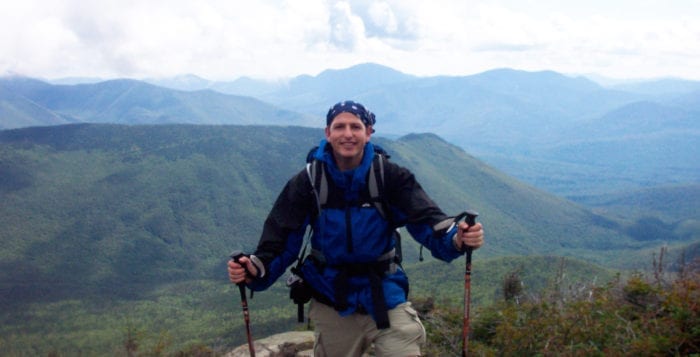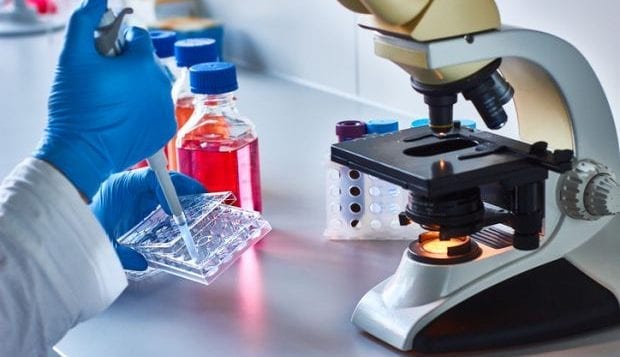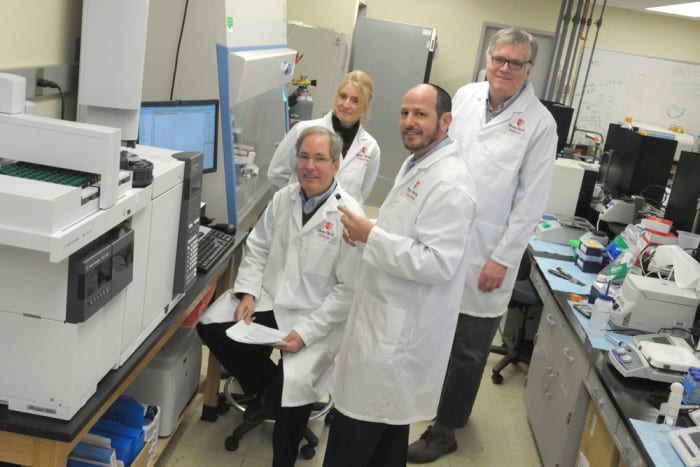By Daniel Dunaief
He hopes to use their addictions against them. By taking away what they depend on for survival, he would like to conquer a disease that ravages and, all too often, kills its victims.
Geoffrey Girnun, an associate professor in the pathology department and the director of cancer metabolomics at Stony Brook University, is looking closely at the addictions cancer has to certain pathways that normal cells do not. “It is really about starving the cancer,” he explained. “Perhaps what you feed the patient can starve the cancer.”
Cancer has a ramped-up metabolism that handles nutrients differently, Girnun explained. Differences between normal cells and cancer can provide scientists and doctors with opportunities to develop selective treatments.
Using mouse models, Girnun is exploring the role of different proteins that either promote or prevent various cancers. Recently, he has been studying one particular protein in the liver cell. This protein classically regulates the cell cycle, which is why finding it in the liver, which has non-dividing cells under normal conditions, was unusual.
Girnun discovered that it promotes how the liver produces sugar, in the form of glucose, to feed organs such as the brain under normal conditions. In diabetic mice, the protein goes back to its classic role as a cell cycle regulator.
“We’re using genetic and pharmaceutical mechanisms to dissect out whether increases in liver cancer associated with obesity in diabetics is dependent on this protein,” Girnun said. If he and other scientists can figure out how the protein that functions in one way can take on a different role, they might be able to stop that transformation.
“It’s like a linebacker becoming a quarterback,” Girnun said. He wants to figure out “how to turn it back” into a linebacker.
Girnun is exploring the metabolic pathways and signatures for liver cancer. If doctors are targeting one particular pathway, they might develop “personalized therapy that would help avoid treatments that wouldn’t be effective.”
Girnun’s peers and collaborators said he has contributed important research and insights in his laboratory.
Girnun is “considered a rising star, especially in the area of the downstream signaling events that modulate gluconeogenic gene expression,” explained Ronald Gartenhaus, a professor of medicine and co-leader of the Molecular and Structural Biology Program at the University of Maryland Cancer Center. Gartenhaus, who has known Girnun for seven years and collaborated with him, said metabolomics is “rapidly exploding with novel insights into the perturbed metabolism of cancer cells and how this information might be exploited for improved cancer therapeutics.”
What encouraged Girnun to consider the professional move to Stony Brook was the opportunity to create something larger. “I want to build a program in cancer metabolism,” he said. “I want to build something beyond my own lab.”
When he first spoke to the leadership at Stony Brook, including Ken Shroyer, the head of the pathology department, Yusuf Hannun, the director of the Cancer Center, and Lina Obeid, the dean of research at the School of Medicine, he felt as if he’d found a great match.
Girnun has been so busy working with other researchers that managing collaborations has become a part-time job, albeit one he finds productive and exciting.
Hannun said Girnun has identified “key investigators who are working on developing the field of nutrition and metabolomics.” Girnun is heading up a symposium on May 13th that focuses on innovations in basic and translational cancer metabolomics. The keynote speaker is Harvard Professor Pere Puigserver.
While Girnun changed jobs, he hasn’t moved his family yet from Baltimore. Every week, he commutes back and forth. Girnun and his wife Leah have five children, who range in age from preschool to high school. He hopes his family will move within the next year or so.
Girnun enjoys Stony Brook, where he said he has an office that overlooks the Long Island Sound and where he can run. When he’s hiking on Long Island, he said he has a chance to “think through my experiments.”
His commute from several states away shows “how much I was sold on Stony Brook,” he said. “We believe Stony Brook is moving up to the next level.”
He remains focused on the applications of his research toward people. “Something may be cool mechanistically, but, unless it’ll have a biologically meaningful result and affect how patients are treated or diagnosed, to me, it doesn’t matter,” he said.








